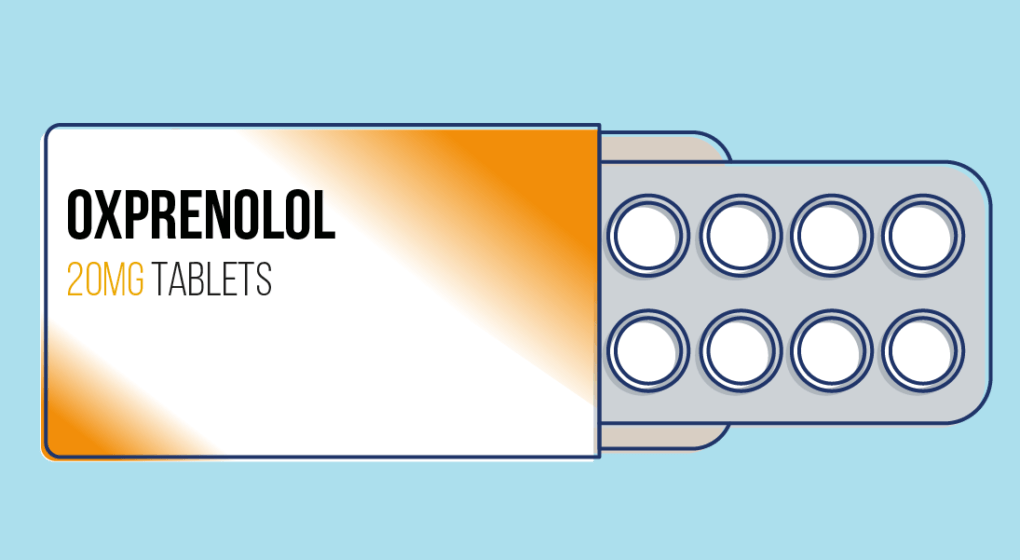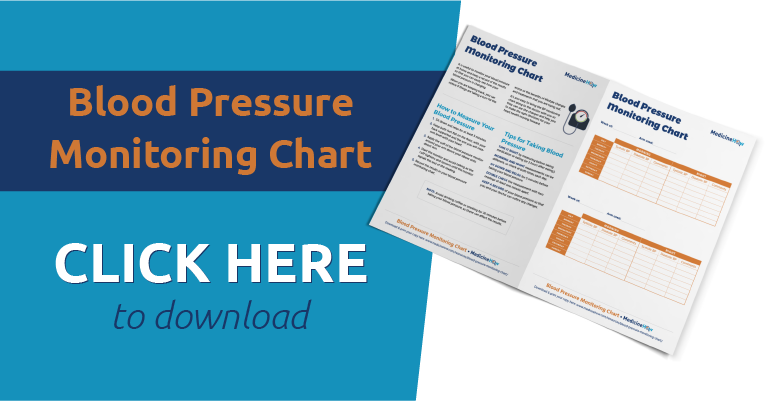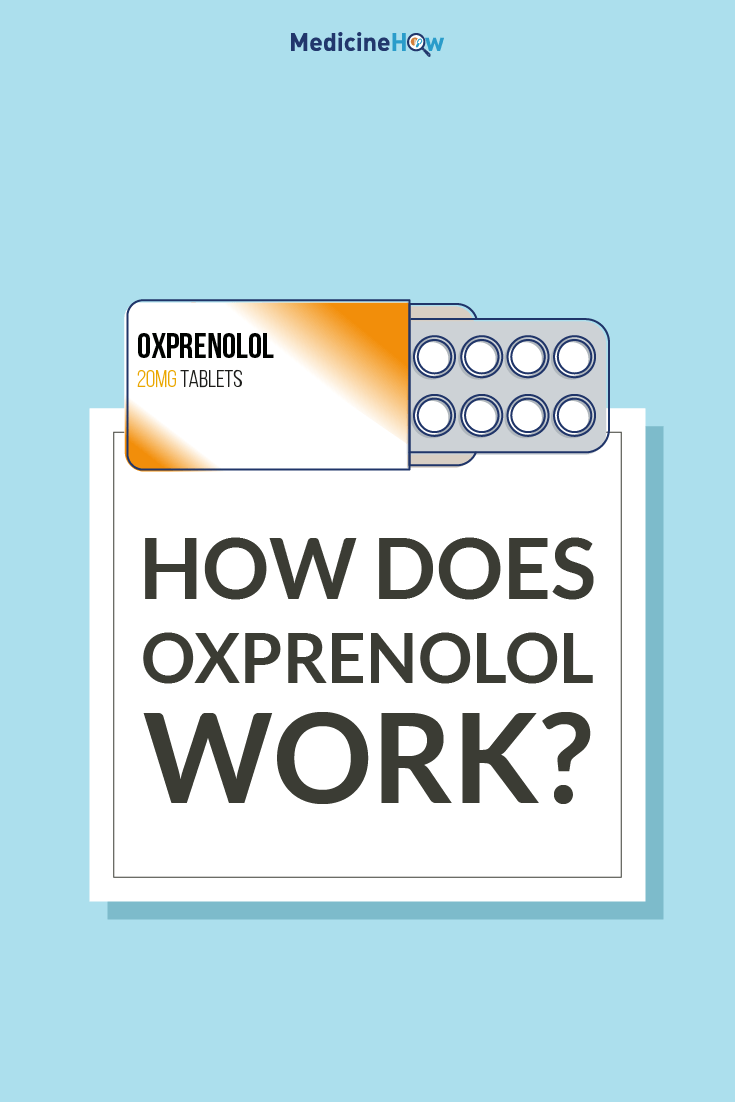
Oxprenolol is a type of drug called a beta blocker that works by blocking beta receptors in the heart and around the body. When you take oxprenolol, the heart muscles contract less often and less forcefully, which causes your heart to beat more slowly and less blood to be pumped around your body.
This can help to lower your blood pressure and treat hypertension or prevent angina. It can help to treat tachyarrhythmias, when your heart beats to quickly, as it reduces your heart rate.

Brand Names and Doses
Oxprenolol is the generic name of the drug, the name of the active ingredient that works the effect in the body. You might know oxprenolol better by its brand name, Corbeton, which is the name given by the manufacturing company.
Corbeton is available in two different doses: 20 mg or 40 mg.
![]() Oxprenolol has a short half life of 2.5 hours, which means that half of the drug will be excreted from the body with 2.5 hours of taking the tablet. As we want the drug to have a constant effect on our blood pressure, you will need to take a dose several times, often with each meal throughout the day, to “top up” the concentration in your body.
Oxprenolol has a short half life of 2.5 hours, which means that half of the drug will be excreted from the body with 2.5 hours of taking the tablet. As we want the drug to have a constant effect on our blood pressure, you will need to take a dose several times, often with each meal throughout the day, to “top up” the concentration in your body.
Most people begin taking a low dose such as 20 mg three times a day: in the morning, with lunch and before bedtime. This helps to allow your body to get used to taking the drug and reduce side effects that may occur if your blood pressure suddenly decreases. The dose can then slowly be increased until your blood pressure is well controlled, to a maximum dose of 320 mg daily.
What type of drug is it?
Oxprenolol is a type of drug called a beta blocker, which is a group of medications that all work in a similar way. Other beta blocker drugs include:
Even though they are all in the same class, there are a few subtle differences between them.
What makes oxprenolol stand out?
Oxprenolol is a broad-acting beta blocker that inhibits beta receptors all around the body, both in the heart and the lungs. This means that it will effect the way that the muscles contract in both of these areas. In the lungs, beta blockers can lead to tightening of the airways, which can increase difficulty breathing for people with respiratory diseases such as asthma or COPD.
Oxprenolol is mainly excreted from your body by being chemically changed into other substances in your liver. If you have poor liver function, you may need to take a lower dose of the medication than usual because your body will take longer to clear it from your body. It is also excreted from your body very quickly – more than half of it is gone within 2.5 hours of taking a dose. For this reason, you will need to take doses more frequently than other beta blocker drugs (e.g. 2-3 times a day, rather than 1 tablet a day).
How does oxprenolol work?
Beta-adrenergic receptors are found in the heart and lungs in the body and detect a message and tell the muscles in the area to contract together. In the heart, this means that the heart beats to push the blood out and into your blood vessels.
Oxprenolol attaches to these beta receptors in the heart and the lungs, making it more difficult for the messages to find their way to the receptor and tell the muscles to contract.
This doesn’t stop the heart from functioning altogether, but it does slow the heart down. The muscles contract less often, leading to a slower heart rate and less forceful beats. As a result, the blood pressure decreases.
What is oxprenolol used for?
![]() Oxprenolol can be used for several different health conditions relating to the cardiovascular system because of the way that it works. It can help in the management of:
Oxprenolol can be used for several different health conditions relating to the cardiovascular system because of the way that it works. It can help in the management of:
- Hypertension – lowers blood pressure by decreasing the rate and force of the heart
- Angina prevention – decreases blood pressure and stress on the heart, reducing risk of angina symptoms
- Tachyarrhythmia – lowers the heart rate to manage the racing heart of tachyarrhythmia
Side Effects
The most common side effects of oxprenolol occur because the drug is working too well in the body and you end up with low blood pressure. Some signs of this are:
- Low heart rate (bradycardia)
- Headache
- Tiredness
- Dizziness
- Flushing
If this happens to you, you should talk to your doctor about lowering the dose to get your blood pressure back into the normal range so that you feel better. Most people start taking with a low dose of oxprenolol and gradually increase it to help stop this from happening.
You may also feel nauseous, have diarrhoea or a cold sensation in your extremities like your hands and feet when you take oxprenolol. For a complete list of the side effects, you should see the medicine information leaflet.

![]() Oxprenolol is supposed be taken long-term to help manage blood pressure, angina or arrythmias. If you suddenly stop taking it, the muscles in the heart will be able to contract with full force all at once and you may get rebound hypertension worse than initially. Instead, slowly reduce the dose and stop taking it to give your body time to adjust to working without the medication.
Oxprenolol is supposed be taken long-term to help manage blood pressure, angina or arrythmias. If you suddenly stop taking it, the muscles in the heart will be able to contract with full force all at once and you may get rebound hypertension worse than initially. Instead, slowly reduce the dose and stop taking it to give your body time to adjust to working without the medication.
If you have a low heart rate of less than 45-50 beats/minute, oxprenolol is not likely to be the best choice for you because it causes the heart rate to go even slower.
If you have diabetes, oxprenolol can hide the signs of side effects life hypoglycemia that is a side effect of some diabetic medications, involving a low concentration of sugar in your blood. Signs of a fast heart rate and tremor usually help to recognise this, but oxprenolol can hide these effects, so that you not may notice until the damage is already done.
Pregnancy and Breastfeeding
Oxprenolol is not recommended to be used in pregnancy because it may lead to a low heart rate in your baby. The safety of oxprenolol for women who are breastfeed is not well known, so other medications may be a safer option.
Pin it!


